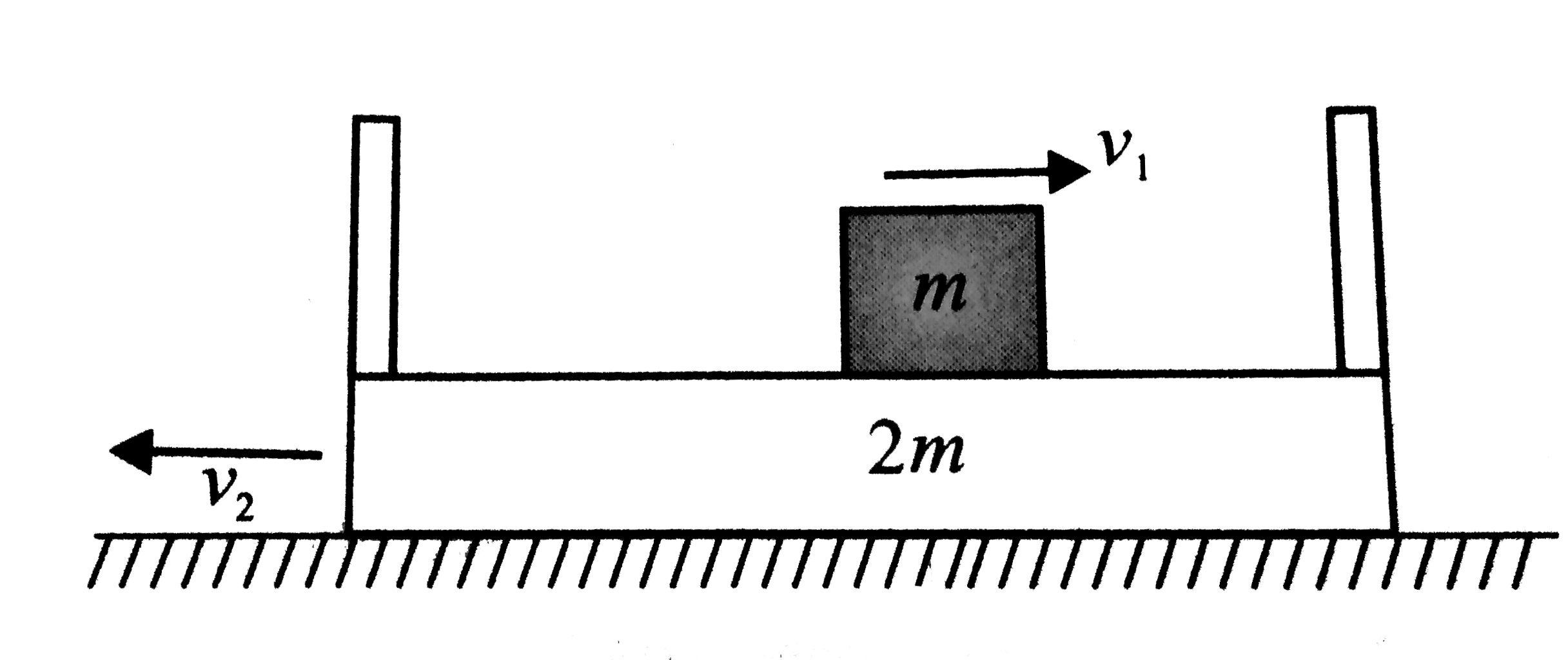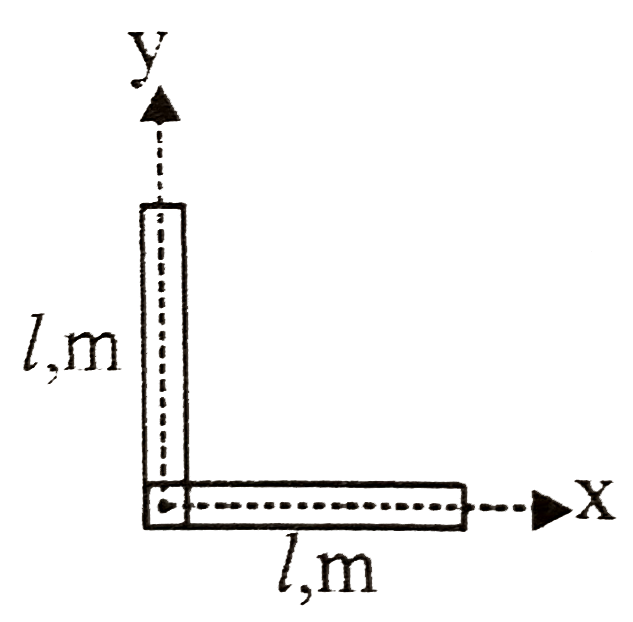According to the principle of conservation of linear momentum, if the external force acting on the system is zero, the linear momentum of the system will remain conserved. It means if the centre of mass of a system is initially at rest, it will remain, at rest in the absence of external force, that is, the displacement of centre of mass will be zero.
Two blocks of masses 'm'and '2m' are placed as shown in Fig. There is no friction anywhere. A spring of force constant k is attached to the bigger block. Mass 'm' is kept in touch with the spring but not attached to it. 'A' and 'B' are two supports attached to '2m'. Now m is moved towards left so that spring is compressed by distance 'x' and then the system is released from rest.

Find the relative velocity of the blocks after 'm' leaves contact with the spring.
√2k3m
3x√k2m
x√3k2m
none of these
The correct Answer is:C
mv1=2mv2

⇒v1−2v2
12mv21×2mv22=12kx2
Solving, we get
v1=2(√k6m)x,v2=(√k6m),x
Relative velocity
v1+v2=3(√k6m)x=x√32km
Topper's Solved these Questions
- BOOK - CENGAGE PHYSICS ENGLISHCHAPTER - CENTRE OF MASSEXERCISE - Integer16videos
CENTRE OF MASS
- BOOK - CENGAGE PHYSICS ENGLISHCHAPTER - CENTRE OF MASSEXERCISE - Fill In The Blanks2videos
CENTRE OF MASS
- BOOK - CENGAGE PHYSICS ENGLISHCHAPTER - CENTRE OF MASSEXERCISE - Assertion - Reasoning2videos
CENTRE OF MASS
- BOOK - CENGAGE PHYSICS ENGLISHCHAPTER - CALORIMETRYEXERCISE - Solved Example13videos
CALORIMETRY
- BOOK - CENGAGE PHYSICS ENGLISHCHAPTER - DIMENSIONS & MEASUREMENTEXERCISE - Integer2videos
DIMENSIONS & MEASUREMENT
Similar Questions
If net external force acting on the system is zero then
View SolutionCalculate centre of mass of the system
 View Solution
View SolutionIf the external forces acting on a system have zero resultant, the centre of mass
View SolutionThe angular momentum of a system of particles is conserved
View SolutionAccording to the principle of conservation of linear momentum if the external force acting on the system is zero, the linear momentum of the system will remain conserved. It means if the centre of mass of a system is initially at rest, it will remain at rest in the absence of external force, that is, the displacement of centre of mass will be zero.
A plank of mass M is placed on a smooth horizontal surface. light identical springs, each of stiffness K, are rigidly connected to struts at the end of the plank as shown in Fig. When the springs are in their unextended position, the distance between their free ends is 3l. A block of mass m is placed on the plank and pressed against one of the springs so that it is compressed to l. To keep the block at rest it is connected to the strut means of a light string. Initially, the system is at rest, Now the string is burnt.

The maximum kinetic energy of the block m isView SolutionConsider the following two statements:
A. linear momentum of the system remains constant.
B. Centre of mass of the system remains at restView SolutionIf the net external forces acting on the system oif particles is zero, then which of the following may vary?
View SolutionConsider the following two statements:
A. Kinear momentum of the system remains constant.
B. Centre of mass of the system remains at restView SolutionIf no external force acts on a system
View SolutionIf no external force acts on a system
View Solution
